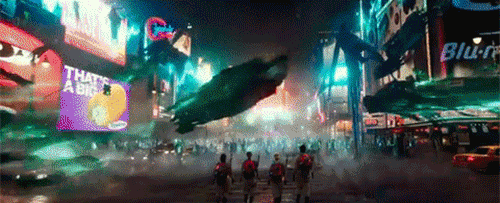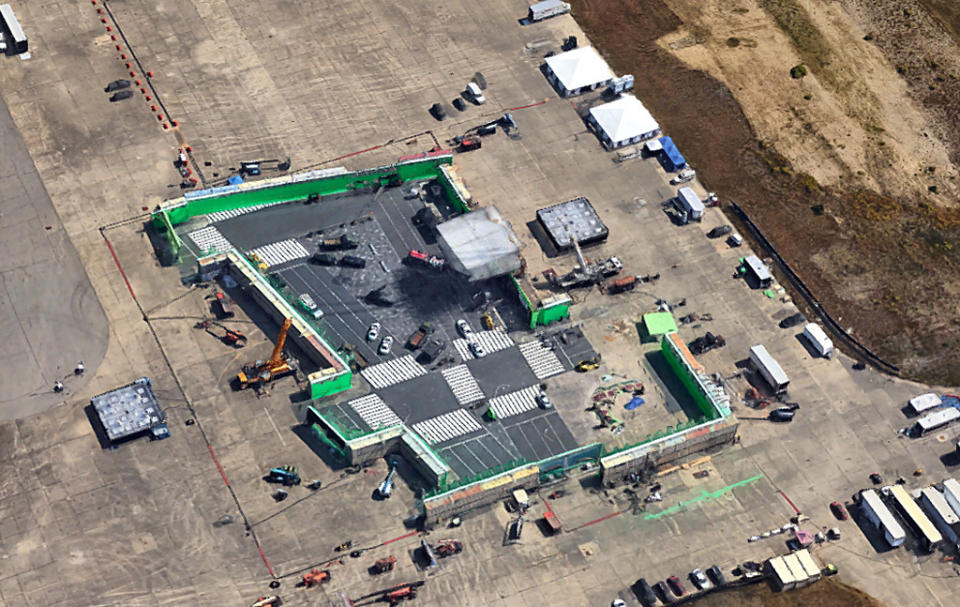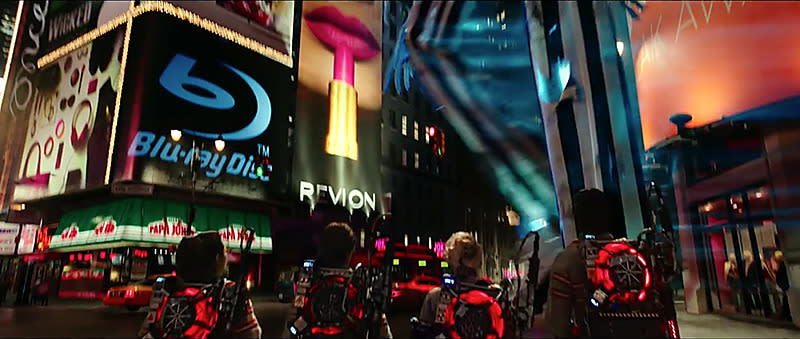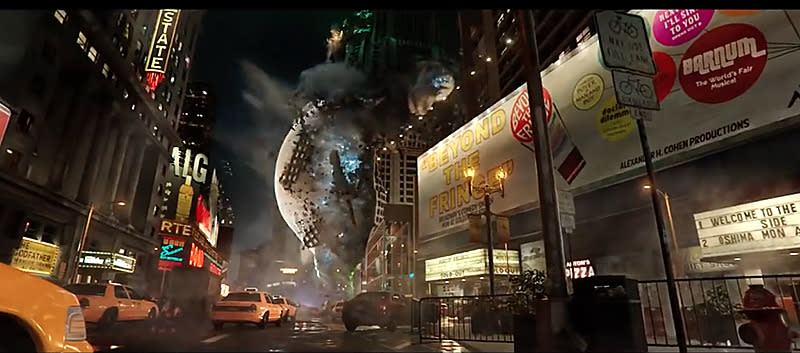How 'Ghostbusters' Re-Created a Bizarro Times Square

In the climactic scene of the new Ghostbusters, our heroines’ final face off with undead takes place in New York’s bustling Times Square. It’s set in the modern-day, but if you focus in on the backgrounds, after a while, you’ll notice the ghosts of the location’s own past: Isn’t that the Bond’s building, for years a landmark on this landscape, but long since shuttered? And isn’t that a billboard for Taxi Driver, whose Travis Bickle walked much meaner streets in 1976? What’s the poster for Boris Karloff in 1971′s Isle of the Snake People doing here? Ghostbusters’ battle for earthly survival actually takes place in two Times Squares — the one of the present day, and one that draws on the location’s grimier past. The kicker is, to find this Times Square, you would’ve had to go to Boston — and inside the minds and computers of the production design and digital artist teams.
Production designer Jefferson Sage gave Yahoo Movies the lowdown on how the movie’s modern-day and throwback Times Squares came to be. Physically, the production landed at the dormant South Weymouth Naval Air Station outside Boston, where a 35,000-square-foot soundstage was constructed as a stand-in for N.Y.’s Crossroads of the World.

South Weymouth Naval Air Station outside Boston, where ‘Ghostbusters’ set up shop for its Times Square scenes (Southfield in Weymouth, Mass./Google Maps)
The location allowed for the mix of physical and digital techniques that would let director Paul Feig and his team create the backdrop for the story’s ghostly grappling. “It represented two and a half blocks, 42 St. to 44 St.,” Sage explained. “We built a section of actual frontage to the hotel [where the Ghostbusters confront bad-boy spirit Rowan]. We painted real detail of crosswalks, had real streetlights, planters — real things to put other real things behind.” Within this physical space, the production could drive vehicles and film the action with its real-life actors (including stars Kristen Wiig, Melissa McCarthy, Leslie Jones, and Kate McKinnon) and extras.
Related: After His ‘Ghostbusters’ Performance, Is Chris Hemsworth the New Marilyn Monroe?
But the innovation was what was surrounding them: 22-ft. walls of green screen, which would eventually support the insertion of digitally created signage that gives the finished scenes its atmosphere. Within the structure itself, Sage says they were able to project “a blueprint” of the planned-for effects as a guide for the actors and crew. It didn’t show exactly what audiences would ultimately see, but did provide reasonable guidance in terms of scale and lighting.

The shift in Times Square from 2016 to 1970s is instigated by Rowan (Neil Casey), whose battered psyche hatches the plot to trigger the ghostly invasion. Sage says that while the character — bitter about his life on Earth — has the upper hand, he decides he’d feel more at home in the scuzzier environs of Times Square past. “Rowan thinks, ‘This is my world now,’” Sage says. The switch “adds more juice to the battle. It’s a nice change-up, you feel the mayhem of the moment.”
Related: ‘Ghostbusters’ End Credits: Setting Up a Potential Sequel and More to Watch For
As for creating the digital Times Square we see on screen, it was all done in post-production, a long process involving multiple teams, including the creation of the ghosts. “It’s too much work for one or two companies,” Sage says.

“We essentially designed the schematics, and had stacks of research” on ‘70s Times Square, Sage says, “so the digital team wouldn’t have to start from scratch. We got permission to use a lot more than we needed, so they’d have a choice.” Sage says that pulling together the digital effects ran straight through from when filming wrapped at the end of September 2015 into June 2016, with the film hitting theaters in mid-July.

For Sage, who has worked on the production design of previous Paul Feig comedies including Spy and The Heat, the action-driven nature of Ghostbusters was a first, and an experience he enjoyed. And after evoking the hustle and bustle of two eras of Times Square, it sounds like he’d be up for spending some time in the wide-open spaces: He mentions production design for a western or a film set in space as challenges he’d like to tackle in the future.
‘Ghostbusters’: Watch a clip of the super-battle in Times Square:

